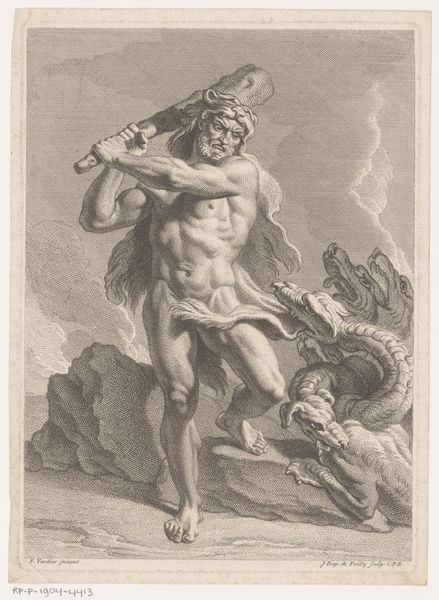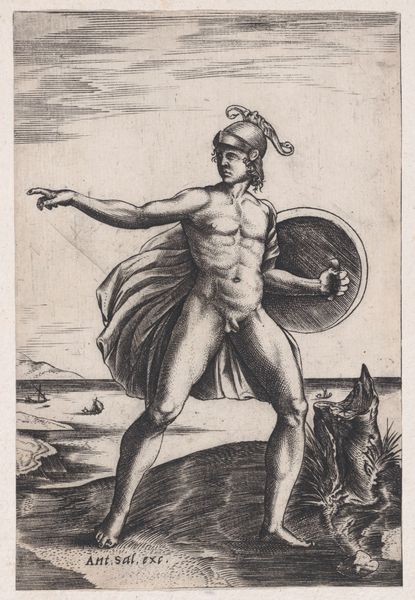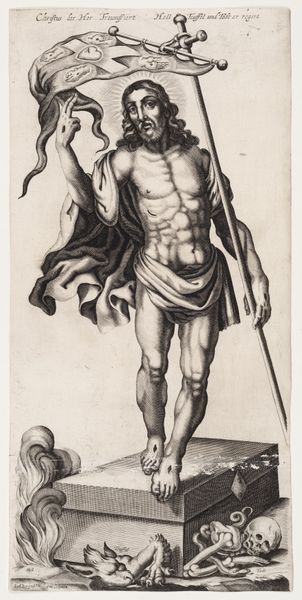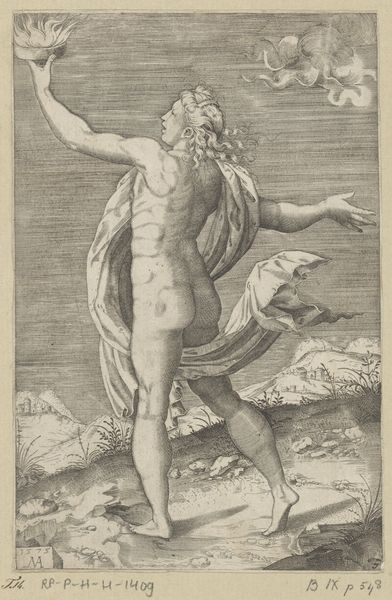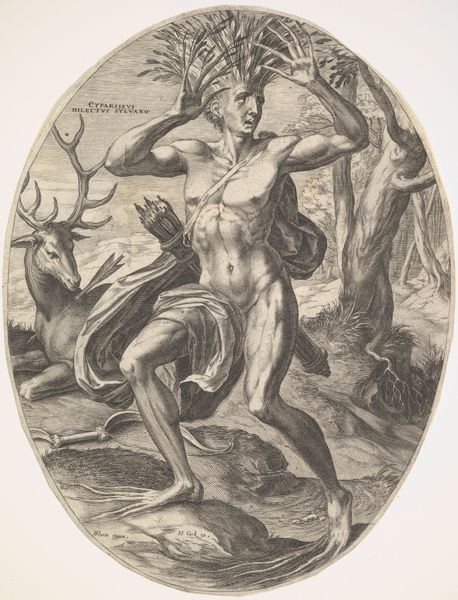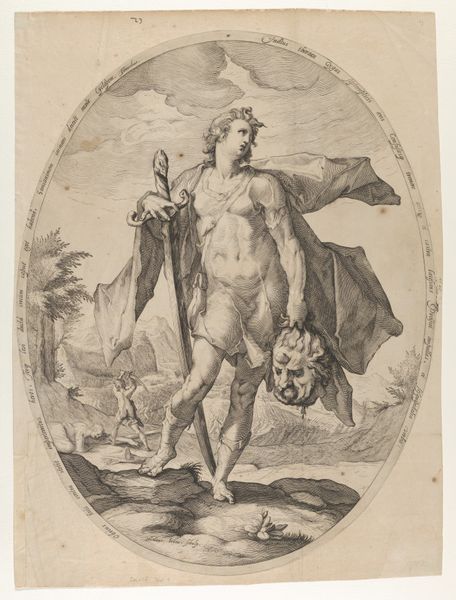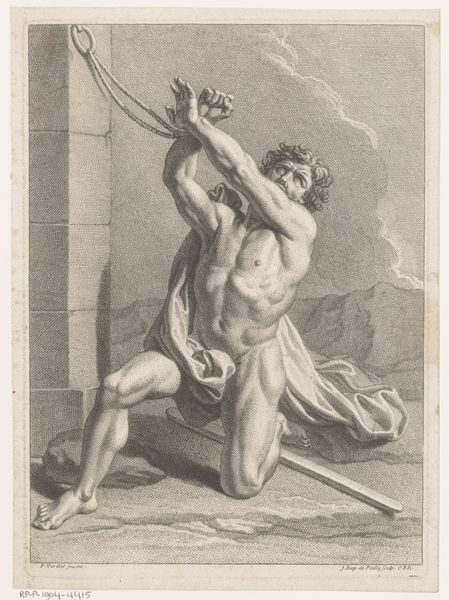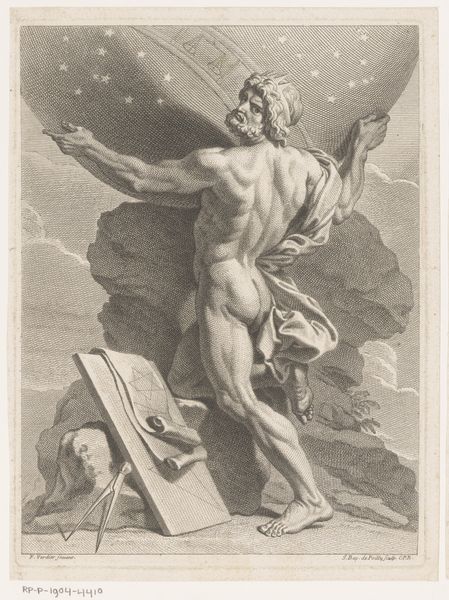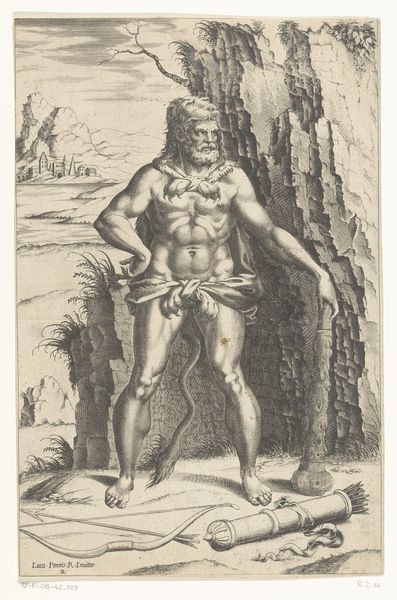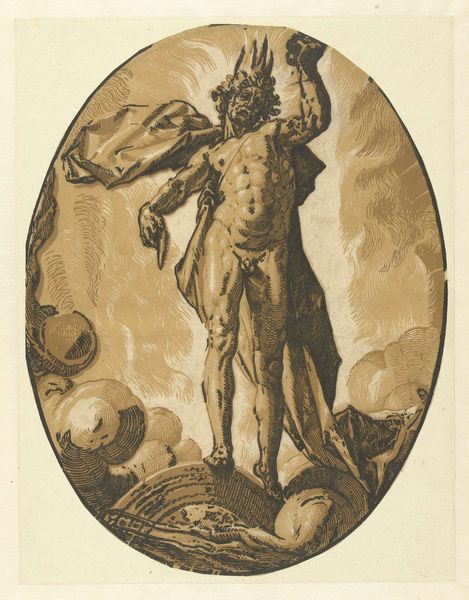
engraving
#
allegory
#
baroque
#
greek-and-roman-art
#
figuration
#
line
#
history-painting
#
nude
#
engraving
Dimensions: height 264 mm, width 190 mm
Copyright: Rijks Museum: Open Domain
Jean-Baptiste de Poilly created this print titled Neptunus sometime between 1669 and 1728. During this time, France was under the rule of Louis XIV, whose reign sought to reinstate the importance of classical antiquity in art. Standing before you is an idealized, hyper-masculine nude figure. He is identifiable as the Roman god Neptune by his trident and the dolphin he stands upon. This representation tells us a lot about 17th century European attitudes toward power and beauty. The male nude, particularly in the form of gods and heroes, was used to convey authority and a sense of divine right. As you look at this image, think about the ways in which gender and power intersect. How does the artist use the male body to communicate ideas about control, dominance, and even civilization itself?
Comments
No comments
Be the first to comment and join the conversation on the ultimate creative platform.
